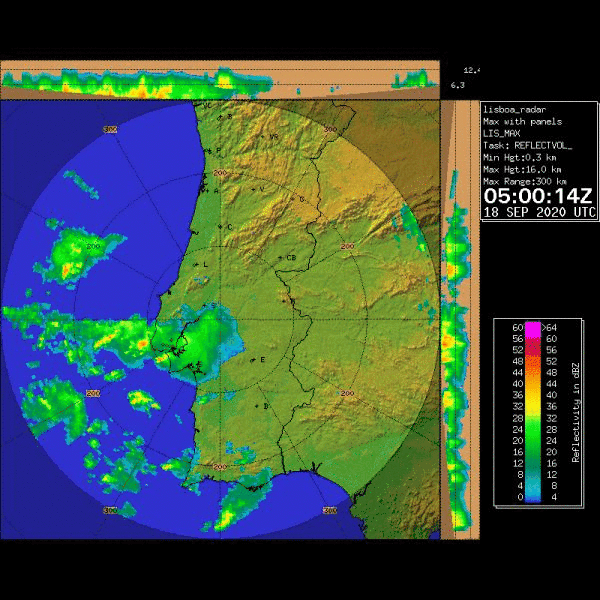Tropical Storm Beta made landfall in Port O'Connor, Texas on Monday night and as anticipated, the wind and the storm surge were not a big deal, but the rain was, and still is. Here is a three-day rainfall accumulation estimate (there's also a regional radar loop going back to the 19th at bmcnoldy.rsmas.miami.edu/tropics/radar/) showing the not-too-impressive-looking storm and its stagnant sprawling rain. Beta is already the NINTH named storm to hit the continental U.S. this year... tied with 1916 for the most in an entire season.
Beta is forecast to continue to sit in roughly the same area for another day or so before getting kicked off toward the northeast. This will result in more rain over the same general areas, so flash flooding is of course a significant hazard.
Hurricane Teddy passed east of Bermuda on Monday (exactly a week after Hurricane Paulette passed directly over the island) and is making the transition to an extratropical cyclone... but it's still technically a Category 2 hurricane and is rapidly headed for Nova Scotia at 30 mph. The wind field is large, with tropical storm force winds extending up to 350 miles from the center, and hurricane-force winds as much as 105 miles from the center. This will be a very impactful storm there and in Newfoundland, both in terms of wind and storm surge. The last few hurricanes to make landfall in Nova Scotia were Dorian (2019), Earl (2010), Kyle (2008), and Juan (2003).
Fifteen days after it first formed, eight days after passing over Bermuda, and six days after it was declared to be extratropical, Paulette is back as a tropical cyclone. Located between the Azores and the Canaries, Tropical Storm Paulette is now stuck in an area with very weak steering currents, so it should be around for a few more days, basically in the same spot. It is not expected to strengthen much, but it's enough of an oddity to fit in well with the rest of the odd season.
Finally, there's a small disorganized disturbance that formed along a frontal boundary over the weekend... it's centered over western Cuba and south Florida, and is not forecast to move much. Development is very unlikely, but it will make for some breezy and rainy conditions in the region for a day or two. In the infrared satellite image at the top of the post, it's hard to distinguish it amidst the rest of the active front draping down from Teddy.
With the surge of activity lately, the ACE (Accumulated Cyclone Energy) has jumped up to about 147% of average for the date. But it still doesn't touch the values from some of the mega-seasons of the past through September 21 -- the top five through this date are 1933, 2004, 1995, 1926, and 2017.
Elsewhere across the basin, things look quiet for the foreseeable future. But when the time comes, the next names on the list are Gamma and Delta.
- Visit the Tropical Atlantic Headquarters.
- Subscribe to get these updates emailed to you.
- Follow me on Twitter
























































